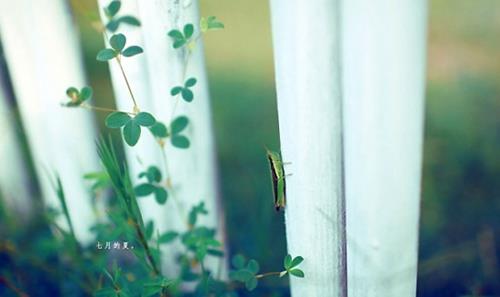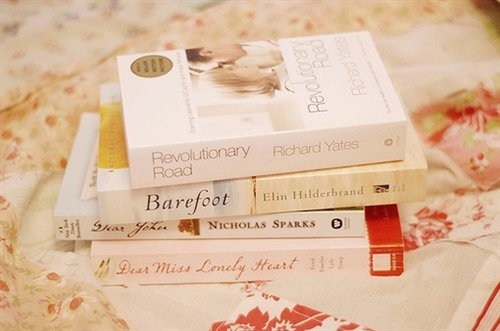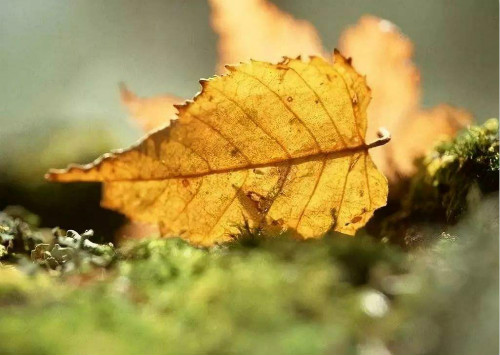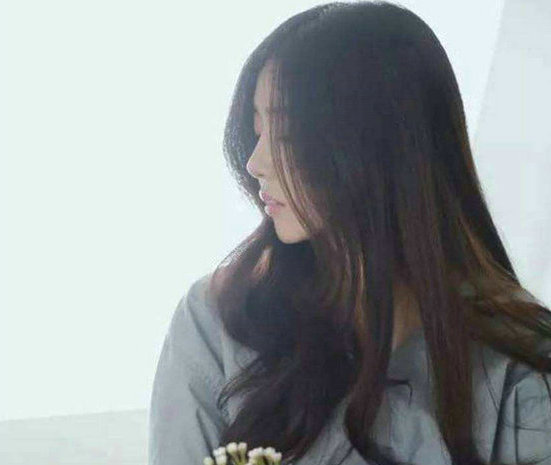
“导游词解说艺术浅议”用英文怎么翻译
北京天安门 中英文导游词Tian’anmen( the Gate of Heavenly Peace), is located in the center of Beijing. It was first built in 1417 and named Chengtianmen( the Gate of Heavenly Succession). At the end of the Ming Dynasty, it was seriously damaged by war. When it was rebuilt under the Qing in 1651, it was renamed Tian’anmen, and served as the main entrance to the Imperial City, the administrative and residential quarters for court officials and retainers. The southern sections of the Imperial City wall still stand on both sides of the Gate. The tower at the top of the gate is nine-room wide and five –room deep. According to the Book of Changes, the two numbers nine and five, when combined, symbolize the supreme status of a sovereign. During the Ming and Qing dynasties, Tian’anmen was the place where state ceremonies took place. The most important one of them was the issuing of imperial edicts, which followed these steps: 1) The Minister of Rites would receive the edict in Taihedian( Hall of Supreme Harmony), where the Emperor was holding his court. The minister would then carry the decree on a yunpan( tray of cloud), and withdraw from the hall via Taihemen( Gate of supreme Harmony) 2) The Minister would put the tray in a miniature longting( dragon pavilion). Beneath a yellow umbrella and carry it via Wumen( Meridian Gate), to Tian’anmen Gate tower. 3) A courtier would be invested to proclaim the edict. The civil and military officials lining both sides of the gateway beneath the tower would prostrate themselves in the direction of the emperor in waiting for the decree to the proclaimed. 4) The courtier would then put the edict in a phoenix-shaped wooden box and lower it from the tower by means of a silk cord. The document would finally be carried in a similar tray of cloud under a yellow umbrella to the Ministry of Rites. 5) The edict, copied on yellow paper, would be made known to the whole country. Such a process was historically recorded as “ Imperial Edict Issued by Golden Phoenix”. During the Ming and Qing dynasties Tian’anmen was the most important passage. It was this gate that the Emperor and his retinue would go through on their way to the altars for ritual and religious activities. On the Westside of Tian’anmen stands ZhongshanPark( Dr. Sun Yat-sen’s Park), and on the east side, the Working People’s Cultural Palave. The Park was formerly called Shejitan( Altar of Land and Grain), built in 1420 for offering sacrificial items to the God of Land. It was opened to the public as a park in 1914 and its name was changed in 1928 to the present one in memory of the great pioneer of the Chinese Democratic Revolution. The Working People’s Cultural Palace used to be Taimiao( the Supreme Ancestral Temple), where tablets of the deceased dynastic rulers were kept. The stream in front of Tian’anmen is called Waijinshuihe( Outer Golden River),with seven marble bridges spanning over it . Of these seven bridges,historical records say the middle one was for the exclusive use of the emperor and was accordingly called Yuluqiao( Imperial Bridge). The bridges flanking it on either side were meant for the members of the royal family and were therefore called Wanggongqiao( Royal’s Bridges). Farther away on each side of the two were bridges for officials ranking above the third order and were named Pinjiqiao( ministerial Bridges). The remaining two bridges were for the use by the retinue below the third order and wre called Gongshengqiao( common Bridges). They anr the one in front of the Supreme Ancestral Temple to the east and the one in front of the Altar of land and Grain to the west. The two stone lions by the Gate of Tian’anmen, one on each side were meant as sentries. They gaze toward the middle axis, guarding the emperor’s walkway. In front of the gate stands a pair of marble columns called Huabiao. They are elaborately cut in bas-relief following the pattern of a legendary dragon. Behind the gate stands another pair of similar columns. The story of Huabiao may be traced to a couple of sources. One of the versions accredits its invention to one of the Chinese sage kings named Yao, who was said to have set up a wooden pillar in order to allow the ordinary people to expose evil-doers, hence it was originally called a slander pillar. Later it ws reduced to a signpost, and now it serves as an ornament. The beast sitting on the top of the column is called” hou”, a legendary animal, which is said to have been a watcher of an emperor’s behaviour. He was doing such duties as warning the emperor against staying too long outside the palace or indulging in pleasure and urging him to go to the people for their complaints or return in due time. Therefore, the two pairs of beasts were given the names” Wangjunhui”( Expecting the emperor’s coming back) and “ wangjunchu”( Expecting the emperor’s going out) respectinvely. In the old days, Tian’anmen, as a part of the Imperial City, was meant for important occasions. The two rows of chaofang( antechamber), on the sides behind the main gate, wre reserved for civil and military members of the government waiting for imperial audience and in front of the gate, were offices of imperial administration. On October 1, 1949, chairman Mao Zedong proclaimed on Tian’anmen Rostrum the founding of the People’s Republic of China. Since then Tian’anmen has been the symbol of New Chine\\\\a. Chairman Mao’s portrait is hung above the central entrance, flanked by two slogans:” Long Live the Great Unity of the Peoples of the World”. Today , the splendour of Tian’anmen attracts million of visitors from all over the world. The Rostrum on its top was opened in 1988 to the public for the first time in its history. It offers a panoramic view of the Square and the city proper. Tian’anmen Square Situated due south of Tian’anmen, the Square has an area of 44 hectares( 109 acres) that can accommodate as many as one million people for public gatherings. It has witnessed may historical events in China’s modern history and is a place for celebrations on such festive days as international Labour Day on May 1st and national Day on October 1st. Around the Square are several famous buildings: 1 The Great Hall of the People This is one of the largest congressional buildings in the world. Built in 1959, the hall consists of three parts: a 10,000-seat auditorium in the center, a banquet hall in the north wing facing Chang’an Street, with a seating capacity of 5,000, and offices for the Standing Committee of the National Peoples’ Congress of China in the south. In addition, thirty-four reception chambers are named after various provinces, autonomous regions and municipalities directly unde the Central Government, plus Hong Kong and Macao. Each is different from the other in decoration and furnishings to stress their local features. 2 The Museum of Chinese History and the Museum of the Chinese Revolution These two museums were also built in 1959. the museum of Chinese History houses a permanent exhibition in four parts, covering the entire process of Chinese history spanning from 1.7 million years ago to 1919: 1) The Primitive Society( 1.7 million years ago to the 21st century BC); 2) The Slave Society(21st century BC to 476 BC.); 3) The Feudal Society(475 BC. To 1840 AD.); 4) The Semi-Colonial and Semi- Fedual Society(1840 to 1919.) The Museum of the Chinese Revolution covers the period from 1919 to 1949. 3 The Monument to the People’s Heroes the monument was built in memory of thousands of martyrs who died for the revolutionary cause of the Chinese people. Its construction began on August 1, 1952 and was not completed until 1958. in the form of an obelisk, the Monument as made of more than 17,000 pieces of tranite and white marble. The purple piece inlaid in the front of the Monument was brought from Qingdao, Shandong Province. It is 38 meters(124ft 8 in) high, the loftiest of its kind ever seen in the country. Not only is it an historic memorial for immortal heroes, but also it is an artistic work of excellent architectural value. On the front side of the Monument is an engraved inscription in Chinese characters written by Chairman Mao Zedong, which reads” Eternal Glory to the People’s Heroes!”. On the back of the Monument is an article written by Chairman Mao, but in Chinese calligraphy by the late Premier Zhou Enlai. At the top of the Monument are eight gigantic carved wreathes of such flowers as peony, lotus and chrysanthemum, symbolizing nobility, purity, and fortitude. At the base of the monument are eight marble reliefs depicting the Chinese historic events since 1840. They are: 1) The Burning of Opium in 1840: 2) The uprising of 1851 in Jintian, Guangxi; 3) The Revolution of 1911; 4) The May Fourth Movement of 1919; 5) The May 30th Movement of 1925; 6) The Uprising of 1927 in Nanchang, Jiangxi; 7) The War of Resistance against Japanese Aggression from 1937 to 1945; 8) The Victorious Crossing over the Yangtze River by the Peoples’s Liberation Army in 1949. This relief is flanked by two smaller ones—“ Supplying the Front” and “ Greeting the P.L.A.”. 4 Chairman Mao’s Mausoleum Chairman Mao Zedong, the founder of the People’s Pepublic of China, passed away on Sepember 9, 1976. In commemoration of this great man, a mausoleum began to be constructed in November 1976, and was completes in August the following year. The Mausoleum was officially opened on September 9, 1977. The mausoleum is surrounded by four groups of sculpture. East of the northern entrance is the sculpture depicting the period of the New Democratic Revolution( 1919-1949), and west of it is the one signifying the great achievements of the Chinese people during the period of slcialist revolution and construction since 1949. The sculptures in front of the southern gate are figures of workers, peasants soldiers, intellectuals, technicians and children. Inside the Mausoleum are three main sections: A white marble statue of Chairman Mao is mounted on a platform in the front lobby. On the wall behind the statue is a 24-metre-long( 79-foot-long) tapestry, a fine needlepoint work with beautiful landscapes of the country. In the main hall there is a crystal coffin, in which Chairman Mao’s body lies stately with the Communist Party’s flag covering over him. On the wall of the southern lobby, a poem by Chairman Mao and in his own calligraphy is inscribed in gold inlay. It expresses his full great expectations for the country. Tian’ anmen Square has now completed its renovation after eight months’ hard work to welcome the 50th anniversary of the People’s Republic in 1999. 各位游客朋友: 我们我们现在已经来到了天安门广场。
大家可以看一下,我们现在的位置是在天安门广场南北方向的中轴线上,距我们南面的人民英雄纪念碑大约有100米左右的距离。
我们今天在天安门广场游览的时间是30分钟。
大家向我这里聚一下,我先给大家简要介绍一下天安门广场的主要景观。
(手势,向北指)大家先向这边看。
(稍停顿,待游客目光集中于手指方向)我爱北京--天-安-门。
一会儿,我会向大家详细介绍天安门的的沧桑历史。
除了天安门城楼外,我还要向您介绍天安门前的金水桥、以及桥前的华表和石狮。
大家回一下头,您看到了,这就是庄严挺拔的人民英雄纪念碑了,随后我也将向您讲一讲她的故事。
纪念碑南边的建筑就是毛主席纪念堂,我们今天的行程没有安排大家瞻仰毛主席遗容,如果您有意去的话,可以告诉我,我会尽量满足您的愿望。
天安门广场东侧的建筑是中国革命历史博物馆,这里陈列了大量珍贵的革命历史文物。
和她相对着的,(手势,向西指)西边的这座建筑,就是非常著名的人民大会堂。
关于她,一会儿我也会向您做详细介绍。
好好好,大家现在可以在广场上拍照留念。
拍照前我给大家提个醒,大家尽量避免站在这条中轴线上拍照,旗杆可能会影响您的拍摄效果。
另外,大家如果在纪念碑前拍照的话,建议您到纪念碑的那一侧去拍,在这边是逆光,会影响照片的效果。
给大家10分钟时间,拍完照请到这里集合,我在这里等大家. 下面我首先为大家介绍一下天安门城楼。
天安门原为明清两代皇城的正门,始建于明永乐十五年(1417),最初叫做承天门,取承天启运,受命于天之意。
清顺治八年(1651年)重修而改名天安门,含受命于天和安邦治民的意思。
至今已有580多年的历史了,是全国重点文物保护单位。
天安门城楼,建筑在巨大条石砌成的须弥座式城台上,造型庄重浑厚,宏伟典雅,是中国传统建筑艺术的典型代表作之一。
城楼通高34.7米。
城台上的大殿宽九楹(62.77米),进深五楹(27.25米),象征封建帝王的九五至尊。
大殿为重檐歇山式,朱墙黄琉璃瓦顶。
南面设有菱花隔扇门、窗36扇,殿内外立有直径2米的巨柱60根,天花、斗拱、梁枋等处、均绘满了最高等级的金龙和玺彩画,金碧辉煌,极为雄伟壮观。
1988年的元旦,天安门城楼正式对外向游客开放。
在天安门高大的暗红城墙中辟有五个券洞门,明清时代,这里的门、桥行走规制森严,中门为皇帝进出专用。
皇帝每年冬至往天坛祭天,夏至去地坛祭地,孟春赴先农坛耕籍田,都要出入天安门。
那么,在当时,是不是只有皇帝一人才能进出中门呢
这位朋友答的对,不是。
大家知道还有什么人可以走这里吗
(稍做停顿)让我来告诉大家。
此外,皇帝的父母可从中门入宫;皇帝大婚,皇后可从中门进入一次;新科状元等金殿传胪后,可从中门出宫一回。
除此之外,严禁任何人进出,否则是要治重罪的。
中门左右的两座旁门,供宗室王公和三品以上文武百官通行。
过去天安门是座只进喜,不出丧的吉祥之门 好好天安门的设计者是蒯(kuǎi)祥。
蒯祥是江苏吴县人,明初洪武年间生于木匠家庭,他的父亲是一位有名望的木工师傅,能主建大型工程。
蒯祥受父亲影响,从小学艺,勤奋好学,聪慧过人,三十来岁时,已成为才华出众的木工匠师了。
燕王朱棣,也就是后来的永乐皇帝,经靖难之役取得帝位后,决定从南京迁都北京。
永乐四年至十八年(1406-1420),明成祖朱棣调集全国各地的能工巧匠前来北京营建工程巨大、难度极高的天安门(初名承天门)等宏伟建筑。
蒯祥以高超的设计方案和精湛的建筑技艺,被推选为皇宫工程的建筑设计师。
当时人们尊称他为蒯鲁班。
蒯祥曾担任建筑皇家宫殿的官吏,直至工部左侍郎等官职,为中国的民族建筑艺术创下了光辉的业绩。
天安门是明清两朝历代帝王金凤颁诏的重地,凡遇国家庆典、新帝即位、皇帝结婚、册立皇后,都需要在此举行颁诏仪式。
届时于城楼大殿前正中设立宣诏台。
由礼部尚书在紫禁城太和殿奉接皇帝诏书,盖上御宝,把诏书敬放在云盘内,捧出太和门,置于抬着的龙亭内,再出午门,登上天安门城楼。
然后将诏书恭放于宣诏台上,由宣诏官进行宣读。
文武百官按等级依次排列于金水桥南,面北而跪恭听。
宣诏完毕,就把皇帝诏书衔放在一只木雕金凤的嘴里,再用黄绒绳从上系下,礼部官员托着朵云盘在下跪接,接着用龙亭将诏书抬到礼部,经黄纸誊写,分送各地,布告天下。
这种颁发封建帝王圣旨礼仪的全过程,就叫做金凤颁诏。
好好我国古代有人生四喜的说法,也就是久旱逢甘霖,他乡遇故知,洞房花烛夜,金榜题名时。
现在,问大家一个有意思的问题,哪位朋友知道,金榜题名的金榜张贴在什么地方
(稍停,待游客猜测)到底在哪里呢
请听我下文分解。
明清时代盛行科举制度,每逢殿试后的第三天,新考中的进士们恭立于天安门金水桥南,等候传呼他们进太和殿朝拜皇帝的礼仪,名叫金殿传胪。
当在太和殿传胪唱名后,礼部官员捧着皇帝钦定的黄榜,带领新科状元、榜眼、探花们出午门,再将黄榜放在龙亭内,在鼓乐仪仗的簇拥下抬出天安门,将黄榜张贴于龙门,也就是当时的长安左门外的龙棚里,公布天下,这里就是张贴金榜的地方,长安左门的位置大致是现在的劳动人民文化宫门前东南侧。
天安门历经沧桑,在新中国成立后,更焕发出了耀人的光彩。
1949年的10月1日,主席在天安门城楼上向全世界宣布了社会主义新中国的诞生,天安门不再是至高无上的封建皇权的象征,而成为了一个新生的人民民主国家的标志,在国徽图案的中央,我们可以看到这座庄严雄伟的建筑。
建国以后,这里成为国家举行重大庆典活动的场所,特别是每逢国庆,党和国家领导人都要登上天安门城楼主持庆典并和各界群众联欢。
天安门前的金水河又称御河、外金水河。
河上横跨七座石桥,中桥正对天安门的中门,叫御路桥,最宽大,雕龙修饰,供帝、后专用。
两旁桥名王公桥,为宗室王公行走。
外侧的两桥称品级桥,供三品以上官员通行。
以上五桥均为三孔。
位于太庙(今劳动人民文化宫)和社稷坛(今中山公园)门前的单孔石桥,叫公生桥,为四品以下官员过往。
那时门、桥行走等级森严,不得有丝毫触犯。
天安门前,也是明清两代进行秋审和朝审的地方。
封建王朝的最高执法机关--刑部衙门,每年五月要把全国各省被判死刑的囚犯名单汇集起来,敬呈皇帝过目。
八月中旬,皇帝诏令有关官员在天安门前进行最后判决,这叫秋审。
朝审则在霜降后举行,主要终审在北京刑部监狱里关押的死刑犯。
这就是为什么以前被判处死刑的人要秋后问斩。
凡经秋审、朝审判处死刑的人,立即推出虎门--长安右门,押赴宣武门外的菜市口等刑场处决。
因此人们对长安左、右门,有龙门与虎门之称。
即凡出'龙门者,荣登金榜,前程似锦;而押出虎门者,则被终判死罪,毫无生还之望。
长安右门的位置大致是在现中山公园门前西南侧。
在天安门南北门外,分别耸立有一对雕刻精美、挺拔秀丽的云龙华表。
据《淮南子·主术训》记载,远在尧舜时代就有街头设表木的做法,用以王者纳谏,征求民众意见以治天下。
到秦汉时期,表木被改为指路标,叫华表。
后来华表经不断美化,便逐渐演变成为中国独具民族建筑特色的艺术装饰品,深为世人所青睐。
系神话传说中的神异物,用汉白玉石雕成蹲于每支华表顶端的承露盘中,双目炯炯有神,密切注视前方。
于天安门里的 脸朝北,双目紧盯皇宫,名望君出,它提醒皇帝不要迷恋深宫生活,而应及时出宫巡视,以利治理天下。
在天安门外一对华表的 则脸朝南,双目向远方眺望,名望君归。
它时时关注皇帝外巡中的行为举止,如不检点或时间长了,望君归就呼唤帝王不得沉米山水、野趣、而应早日回宫,料理国家大事。
好好天安门金水桥前的这一对大石狮,雕工精绝,造型逼真,威武异常。
它们的双目都紧紧注视着天安门前正中的御道(中轴线),以体现它们是封建帝王忠实的卫士身份。
朋友们来看西边的这一只石狮,它的肚皮上有一个深深的洞,这是怎么回事呢
这里有一个很有传奇色彩的故事,据说明代崇祯十七年(1644年)四月,农民起义军首领闯王李自成攻打北京时,当他率军冲进天安门前的T形广场后,只见皇城的大门--承天门就在眼前。
对此,他愤怒地拈弓搭箭,只听嗖….的一声,正射中承天门匾额的天字,顿时众军喝彩,欢声雷动,随后李闯王收起硬弓,挺枪跃马一直奔金水桥冲杀过去。
突然,桥头的两只大石狮张牙舞爪,凶猛阻挡去路。
闯王见此怒不可遏,挺枪刺去,即刻火花四溅,长枪戳向了一只狮子的腹部。
双狮见势不妙,拖着悲惨的哀鸣声,各自退回了原位。
现在的这个洞,就是枪伤疤了。
朋友们,我们面前的这条街就是有神州第一街美誉的长安街。
长安街,当年从长安左门至东单牌楼,名东长安街;从长安右门至西单牌楼,叫西长安街。
古时东西长安街仅3.7公里,有十里长街之称,这是京城历史上有名的天街,其名取自盛唐时代的大都城--长安,含长治久安的之意。
长安街修筑于明朝永乐四年至十八年(1406-1420),与皇城同时建造,是明代兴建北京城总体规划的重要组成部分之一。
东西平行走向的长安街,与纵横南北八公里长的御道中轴线,在天安门前正好垂直相交成准确的十字型经纬座标中心点,从而构成了北京城座北朝南,街巷纵横的总体布局。
原东、西长安左、右门前分别均竖有巨型下马碑,上刻官员人等,到此下马。
古代皇宫内是严禁骑马的,除非是金殿传胪时的新科状元,可骑皇帝御赐的高头大马,在长安街上走过,以示皇恩浩荡。
清王朝灭亡后,内城墙中东西两侧的建国门与复兴门在民国二十九年(1940)被打开的。
新中国成立以后,街面被展宽为50-100米,东西长安街的延伸线东达通州,西抵石景山,总长50公里,有百里长街的美称。
大家现在随我通过地下通道去天安门广场,上下台阶时请您注意安全。
(天安门广场) 我们现在处的这个位置是天安门广场,位于北京城的中心。
其南北长880米,东西宽500米,占地面积44万平方米。
可容纳100万人举行盛大的集会、游行,是当今世界上最宏大的城市中心广场和最著名的旅游胜地之一。
在明清时代,天安门广场是一处皇家禁地,由宫墙围护,仅设三门。
即南有大明门(清朝改称大清门,辛亥革命后叫中华门)、东有长安左门、西有长安右门。
三门之间形成一个封闭式的T字形宫廷广场,原是天安门前举行皇家活动的重要场所。
在T形广场的东、西、南三面,当时建有通脊联檐的朝房144间,名叫千步廊,以供场内活动之用。
清代乾隆年间,又在东、西长安左、右门外加筑三座门,严禁行人过往。
那时人们来往于东城和西城之间,需要绕行于大清门以南或地安门以北,极为不便。
在天安门T形广场东、西千步廊外的大片地带,原是明清两代皇家最高官署衙门的集结之地。
如:东侧(今历史博物馆一带)有礼部、户部、吏部、工部、兵部、宗人府、鸿胪寺、钦天监和太医院等中央文职机关。
西侧(人民大会堂一带)设有銮仪卫(御林军)太常寺、通政司和前、中、后、左、右五军都督府等武职机构。
过去有文东武西和东掌生、西掌死之说,指的就是这些关系到人们生死荣辱的封建王朝的最高权力衙门而言。
明清两朝,从天安门T形广场南端的大明门(清时叫大清门,今毛主席纪念堂一带)至正阳门之间,有一块方形场地,宛如棋盘,故有棋盘街之名。
当年人们喜爱在此贩卖风味小吃、小百货,以及表演戏曲、杂耍等,情似庙会,非常热闹。
由于
介绍山西的英文导游词
Tianjin is a good choice as a travel destination. With its cool sea breeze and fresh sea air you will definitely feel refreshed. Historical relics, natural scenery, temples, churches, assembly halls and commemorative sites of the Chinese revolution will illuminate Tianjin's past, present and future. Tianjin is honored as 'Building Museum' as it was occupied by nine imperial powers before the founding of the new China, leaving behind many buildings with extraordinary and exotic architectural styles, a real feast for the eye! In the following text let me give you a brief introduction to the Jinmen Shijing (top ten scenic attractions in Tianjin).Huangyaguan Great Wall :Located in the mountainous area of Tianjin's northern Ji County, the Huangyaguan Great Wall was first built during the Northern Qi Dynasty (550 - 557) and repaired in large scale with bricks during the Ming Dynasty (1368 - 1644). When appointed as the chief commanding officer in the Ji Garrison (one of the eleven garrisons of the Ming Dynasty), Qi Jiguang added watch towers and other defensive works. The Huangyaguan Great Wall comes out first in the ten most-visited sites in Tianjin. It is considered to be a miniature of the Great Wall. The entire section is built on an abrupt mountain ridge. Being endowed with both natural beauty and cultural interest, it has become famous as a natural beauty spot and a summer resort. The major scenic area is composed of Huangyaguan Pass and Taiping Mountain Stronghold. Huangyaguan Pass: In 1984, the people of Tianjin spent three years repairing 3,308 yards of the main wall from Banlagang Mountain in the east to Wangmaoding Mountain in the west. They restored 20 terraces, the Huangyaguan Water Gate, and the Bagua Castle (the Eight Diagrams Castle). The defensive system of the wall is complete. Watch towers, frontier cities, drain holes, emplacements, barracks and other indispensable military facilities are arranged orderly along the wall. Besides, the stele forests of the Great Wall, Beiji Temple, the exhibition hall of famous couplets, the Great Wall Museum (the first museum along the Great Wall) and the Phoenix Fortress have been newly built within the area.Taipingzhai Great Wall :Six miles southeast of Huangyaguan Pass is the Taipingzhai Great Wall, another important mountain stronghold of the wall during the Ming Dynasty (1368 - 1644). It is also called Taipinganzhai, meaning a village of peace and prosperity. Starting from Banlagang Mountain in the east and arriving at Guafu Tower (Widow Tower) in the west, it winds through the precipitous mountains for about 955 yards. The wall is an important component of Huangyaguan Great Wall. There are six watch towers, one battlement, and one shortcut leading to the wall. The architectural styles of the military towers vary considerably. There are square, round, solid and hollow towers, with some inside and others outside the wall. Beside the shortcut, there is a small citadel where an 8.5-meter statue of Qi Jiguang, the chief commanding officer of Ji Garrison (one of the eleven garrisons in the Ming Dynasty) is located. The local people built this statue in order to commemorate his great contribution to frontier peace and stability in that period. To the west of the citadel, a section of the wall extends 33 yards out to where a sentry post was situated.At the western end of the wall is a square stone tower called Guafu Tower, Widow Tower in English, built by twelve wives whose husbands died during the construction of the wall in the Ming Dynasty. The widows erected this tower to commemorate their husbands' notable exploits. The tower has two levels and measures 13-meters (14-yards) high. Arched arrow windows are on the four sides of the tower. Besides these cultural points of interest, Taipingzhai Great Wall is also famous for its amazingly impressive scenery. Zigzagging along the mountain ridge for over 984 yards, the wall looks very much like a giant dragon flying through clouds.Mt. Panshan Scenic Area :Covering an area of 106 square kilometers (about 26193 acres), Mt. Panshan Scenic Area is located in Jixian County, 110 kilometers (68.4 miles) away from Tianjin, 88 kilometers (54.7 miles) away from Beijing. As the name suggests, the scenic area is mainly Mt Panshan–oriented. Endowed with natural beauty and a historical heritage, Mt Panshan is known as 'The First Mountain East of Beijing' and is listed as one of the top fifteen mountains in China.The mountain acquired its present name, early in the Eastern Han (25-220). Taizong , the second emperor of the Tang Dynasty (618-907), was prodigal of his praise of its scenery on his chance visit when he led the army in a campaign. Seventy-two temples, thirteen pagodas and numerous Xanadus and towers were built on the mountain in the Ming Dynasty (1368-1644) and the Qing Dynasty (1644-1911). Qianlong, a brilliant and wise Qing Dynasty emperor was so impressed that he made thirty or so visits and wrote 1366 poems to express his admiration of the area. In the first half of the twentieth century, the whole resort all fell to ruin due to hostilities and neglect. It has undergone a process of restoration since the 1990s and is now regaining its fame.It is famous for jade pine trees, strange and astonishing peaks, clear waters, grotesquely shaped rocks and clusters of ancient temples. On the mountaintop, numerous pines hide the sky from view and block out the sunshine. Rugged rocks in a variety of shapes, some of which resemble a toad, a general or a boa, will greet you in the middle of the mountain. At its foot, clear water splashes on the rocks. The mountain consists of five peaks, with the main one, Guayue (Moon Hanging) Peak. Although Guayue Peak is only 857 meters (2811.7 feet) above sea level, to the north it is possible to see a section of the Great Wall while to the west Mt Taihang can be seen.From the Wei State during the Three Kingdoms Period (220-280) onwards, emperors enthusiastically commissioned the building of temples, towers and Xanadus resulting in over 160 such sites. There are four main temples: Tiancheng Temple (God Proposing Temple), Yunzhao Temple (Cloud-Hiding Temple), Wanfo Temple (Ten Thousand-Buddha Temple) and Wansong Temple (Ten Thousand-Pine Temple). Tiancheng Temple built in the Tang Dynasty, was enlarged and repaired in the Ming and the Qing dynasties. To the east of this temple stands the Ancient Dagoba. As the biggest tower in this mountain, it has thirteen floors. The roof of the Yunzhao Temple was a golden yellow, a color that normally was only allowed to be used on imperial buildings. By granting permission for this, Emperor Qianlong demonstrated his approval and admiration of the mountain. Wanfo Temple (Ten Thousand-Buddha Temple) has 10,960 small Buddhas statues.
请问谁有英文版的国外著名景点导游词
适合上台演讲的。
。
。
急需两篇
各位游客: 欢迎大家来到新疆。
新疆有着占全国面积六分之一的土地,人们一踏上这里,就会被它的神奇博大、美丽富饶所吸引。
相信在短短几天的游览中,新疆光彩夺目的历史文化、瑰丽全姿的民族风情、神秘绝妙的自然景观、珍奇稀有的古迹遗踪、富饶丰盛的物产资源会让您惊叹不已。
地理概况 游客们,新疆神奇在哪里?首先还是让我来介绍一下它的地理概貌。
新疆的地形地势可以用一句话来概括,这就是“三山夹两盆”。
天山山脉横贯新疆,南与昆仑山脉、阿尔金山脉合抱塔里木盆地,北与阿尔泰山脉合抱准噶尔盆地。
俗称天山以南为南疆,天山以北为北疆。
南疆的塔里木盆地,中间是塔克拉玛干大沙漠;北疆的准噶尔盆地,中间是古尔班通古特沙漠。
两大沙漠周围,分布着大大小小的绿洲。
绿洲和山地草原,成了新疆人民的世居之地。
一份关于普罗旺斯 英语 导游词
旅行时尝尝当地的食物,那么行程算完整了。
在普罗旺斯你到用大甜西红柿和橄榄油调制而成的佳肴,这儿的美酒在法国也很有名。
The people there are well-known for keeping their traditions alive. They hold many celebrations, dances, and festivals. You can even see a bullfight in the towns of Arles and Nimes, or enjoy poetry at Orange's ancient Roman theater with the stars shining above you.当地居民以维护自己的传统闻名,他们经常举办许多舞会和庆典活动。
你甚至可以在名为阿尔勒和尼姆的小镇里观赏斗牛表演,或在奥朗日的古罗马剧场中,伴着闪耀星空聆听诗词诵读。
Although Paris is the usual destination for travelers in France, you would be making a good choice by heading down south to Provence. It is a place well-loved by artists such as Van Gogh, Picasso, and Renoir, and it continues to impress any visitor who experiences its pleasures.虽然旅客前往法国的目的地通常是巴黎,但如果南下到普罗旺斯也是个不错的选择。
这里曾深受梵高、毕加索和雷诺阿等艺术家的喜爱,也一直让前来体验当地乐趣的游客留下深刻的印象。
临汾尧庙导游词英文500词
Distinguished leaders, distinguished guests, ladies and gentlemen:Welcome to Weifang University!Weifang University is approved by the Ministry of education to establish a full-time general undergraduate colleges, with 56 years of history, is now facing the country's 26 provinces and municipalities. Campus covers an area of more than 2000 acres, the construction area of about 700000 square meters of school buildings, teaching and research equipment worth 130 million yuan.Enter college south gate, you now see the main sculpture of the century wind, sculpture 21.03 meters high, built in 2003, marks the Weifang University in twenty-first Century will achieve a new leap and take off. The north wind is the century music fountain square, on weekends and important events, square fountain, surging music flying, this is our warm and vibrant music fountain to express welcome and sincere greetings from the bottom of my heart.The overall plan of the campus is designed by the famous American design company LTC, which combines the idea of the West and East. Adhere to the people-oriented, humanized design, and overall reflect the characteristics of the sky.Toward the north is the executive office building, the office building is located in the center of the college, it is the north of the library. South Gate, music square, office building, library and North Gate in a straight line.Library construction area of more than 27 thousand square meters, 1 million 600 thousand volumes of books, reflecting a long history and culture of the Weifang Cultural Hall of fame, Weifang ancient books are located in which. Library door is named Kai key type of sculpture, marking it will lead the college teachers and students to open the door of knowledge, culture and wisdomSchool things on both sides are symmetrical distribution of the 8 teaching building. Near the office building on both sides of the two large nursery, a green landscape of the campus line.To the north is the artificial lake, called Hongde lake, the southern end of the lake there is a rockery, named Ming shan. Hongde lake, Ming mountain in naming also reflects the very good Weifang University virtue, erudite, practical and innovative spirit of the school motto.On the east side of the college sports ground. 400 meters standard plastic runway, reached the International Olympic standard. Sports field near the other with a Volleyball Hall, basketball hall, wind and rain, etc., to meet the students and teachers, exercise, exercise. Fitness and many other needs.Art sports building. Department of music, the Department of physical education in this organization. It is equipped with high-end piano room and indoor sports venues. The design is elegant, library and art building both won the highest award of Shandong province Taishan Cup project quality engineering award.Now we see a student living area. Students living in the region has seven student apartment buildings and 2 students dining room, dormitory affiliated facilities, public area, humanized design, ensuring that each room in different time can have better lighting.You are now seeing the two student dining hall, which can accommodate more than 10 thousand students at the same time dining. Dining room two, especially with Muslim restaurants, to meet the needs of ethnic minority students.College of the existing staff of more than 1 thousand and 700 people, including 1 full-time teachers hired more than a thousand people, academician of the Chinese Academy of Sciences and other well-known experts and professors of more than 70 people, college distinguished professor or part-time. Senior professional titles more than 550 people, doctor, master's 410 people. 41 undergraduate programs, covering science, engineering, agriculture, economics, literature, law, history, education and management of the 9 disciplines, students more than 2 adult education students, and more than 8000 people, distance education students and more than 19000 people, more than 20 foreign students. College credit system management, open up the excellent college students or undergraduate students can enroll in the channel, second minor professional undergraduate, postgraduate enrollment rate per year was more than 25%, one-time employment rate of graduates in recent years has been the forefront of similar institutions in the province. Weifang University has excellent educational traditions and distinctive features, we will further implement the party's education policy, to improve the quality of personnel training and educational benefits as the goal, continue to be based on scientific development, in accordance with the basic party, consolidate and deepen and improve the development of needle, vigorously promote the change two extension of three on four five improvement of the 12345 project, for in the near future to build the college into a complete, reasonable structure, complete facilities, distinctive characteristics, comprehensive university is full of vigor and vitality and strive.Finally, once again, thank you for coming to Weifang University to visit and guide the work, and sincerely welcome you again!尊敬的各位领导、各位嘉宾:欢迎您光临潍坊学院
潍坊学院是经教育部批准建立的一所全日制综合性普通本科院校,具有56年的办学历史,现面向全国26个省市招生。
校园占地面积2000余亩,校舍建筑面积70多万平方米,教学科研仪器设备总值1.3亿元。
进入学院南大门,您现在看到的是世纪风主体雕塑,雕塑高21.03米,于2003年建成,标志着潍坊学院在21世纪将实现新的跨越与腾飞。
往北是世纪风音乐喷泉广场,每当周末以及重要活动时,广场上喷泉涌动、音乐飘扬,这是我们以热情的音乐和动感的喷泉来表达源自心底的最诚挚的欢迎与问候。
校园整体规划是由美国著名的设计公司LTC公司设计的,校园设计较好地融合了东西方建筑理念。
坚持以人为本,人性化设计,并整体体现了天圆地方的特点。
往北正对是行政办公楼,办公楼位于学院的中心位置,它的北面是图书馆。
南大门、音乐广场、办公楼、图书馆和北大门在一条直线上。
图书馆建筑面积27000多平方米,馆藏图书160万册,反映悠久历史文化的潍坊文化名人馆、潍坊古籍馆也座落其中。
图书馆门前是取名为“启”的钥匙型雕塑,标志着它将引领学院师生开启知识、文化与智慧的大门 学院东西两侧是对称分布的8栋教学楼。
靠近办公楼的两侧是两个大的苗圃,形成一道一道绿色的校园风景线。
继续往北是人工湖,名为弘德湖,湖的南端有一座假山,取名明志山。
弘德湖、明志山在命名上也很好的体现了潍坊学院“厚德、博学、求是、创新”的校训精神。
东侧是学院运动场。
400米标准塑胶跑道,达到了国际奥林匹克标准。
运动场附近另设有排球馆、篮球馆、风雨操场等,满足了师生员工运动、锻炼。
健身等多方面的需要。
往北是艺术体育楼。
音乐系、体育系在此组织教学。
其间配备着高档琴房和室内运动场馆。
由于设计美观大方,图书馆和艺体楼双双获得了山东省工程质量最高奖“泰山杯”工程奖。
现在我们看到的是学生生活区。
学生生活区内有七座学生公寓楼和2个学生餐厅,学生宿舍附属设施功能齐全,公共面积大,设计人性化,保证了每个房间在不同时间都能有较好的采光。
您现在看到的是二号学生餐厅,它可以容纳1万多学生同时就餐。
餐厅二楼特别设有穆斯林餐厅,以满足少数民族学生的就餐需要。
学院现有教职工1700多人,其中专任教师1千余人,聘请中科院院士等国内外知名专家、教授70余人任学院特聘或兼职教授。
高级职称550余人,博士、硕士410余人。
本科专业41个,涵盖理学、工学、文学、法学、农学、经济学、历史学、教育学和管理学9大学科门类,在校生2万余人,另有成人教育生8000余人,远程教育在校生19000余人,外国留学生20余人。
学院实行学分制管理,打通了优秀专科生升本科的通道,学生可修读第二辅修专业,本科生考研录取率每年均超过25%,毕业生一次性就业率近年来一直列省内同类院校前茅。
潍坊学院有着优良的办学传统和鲜明的办学特色,我们将进一步贯彻落实党的教育方针,以提高人才培养质量和办学效益为目标,继续立足科学发展,按照“巩固、深化、提高、发展”的基本方针,大力推进“一改二扩三评四上五提高”的“一二三四五”工程,为在近期内把学院建设成为一所门类齐全、结构合理、设施完备、特色鲜明、充满生机与活力的综合性大学而努力奋斗。
最后,再次感谢您莅临潍坊学院参观并指导工作,并真诚欢迎您再次光临



